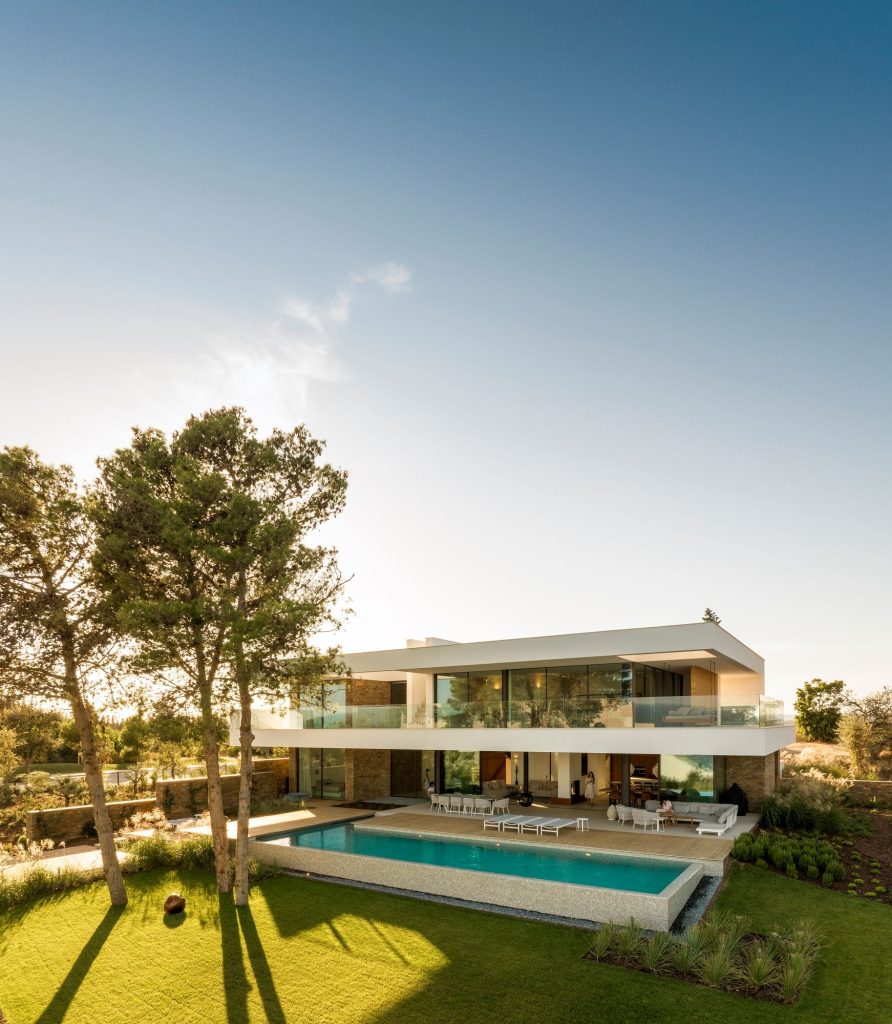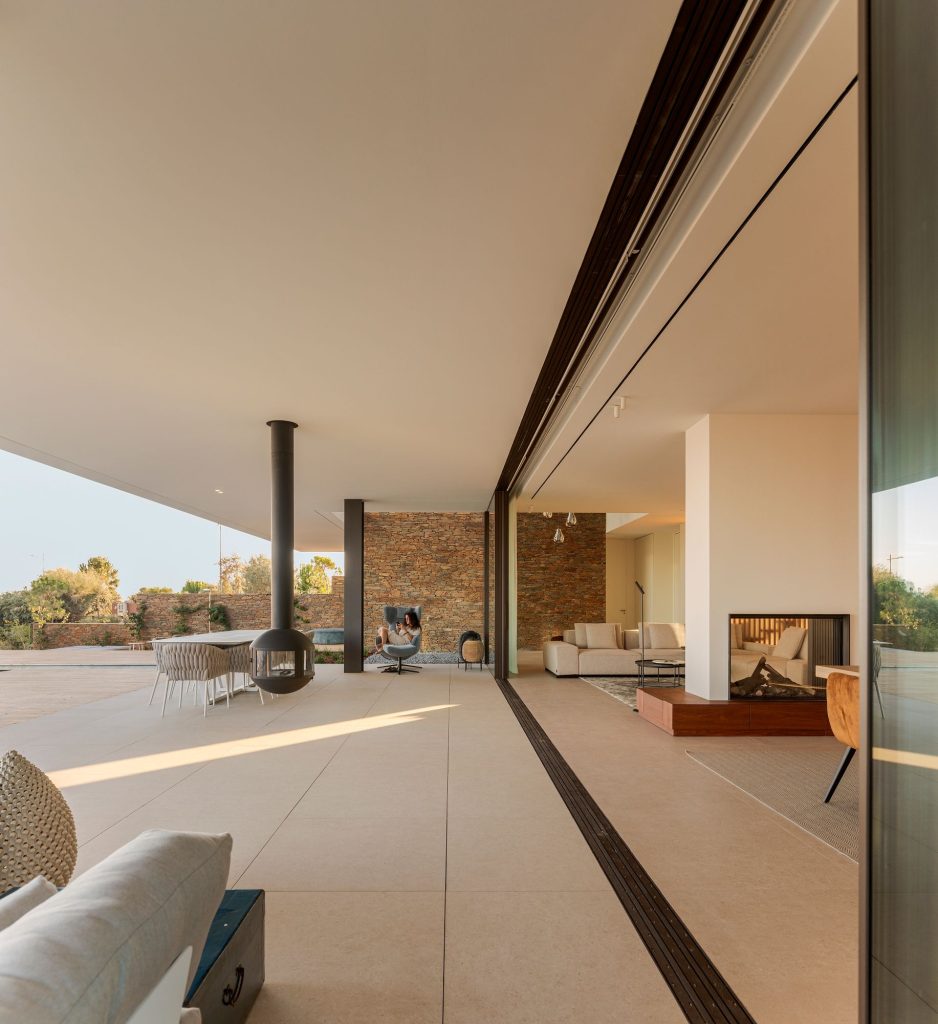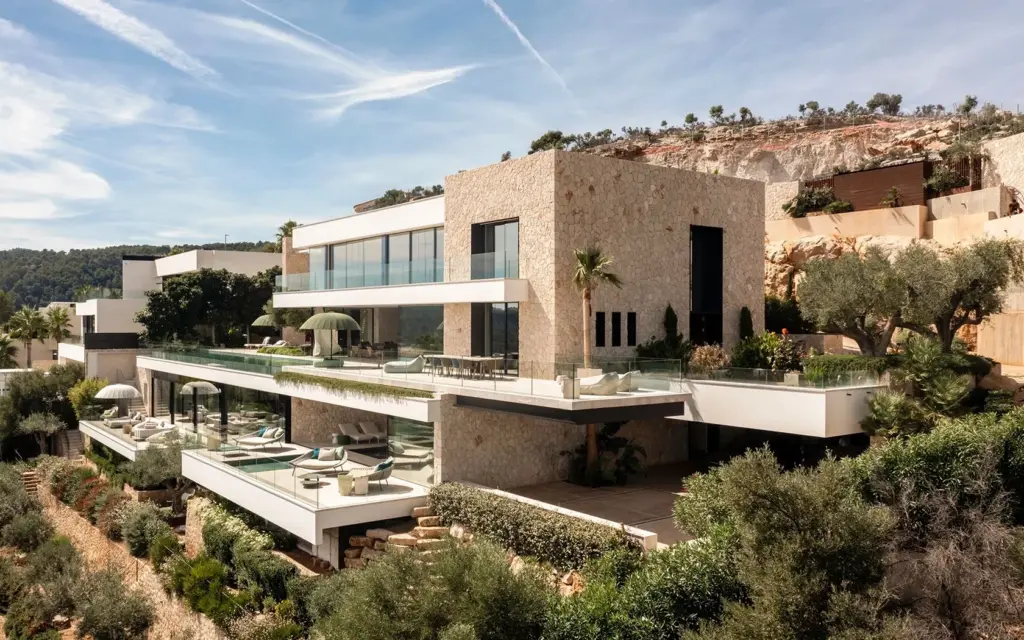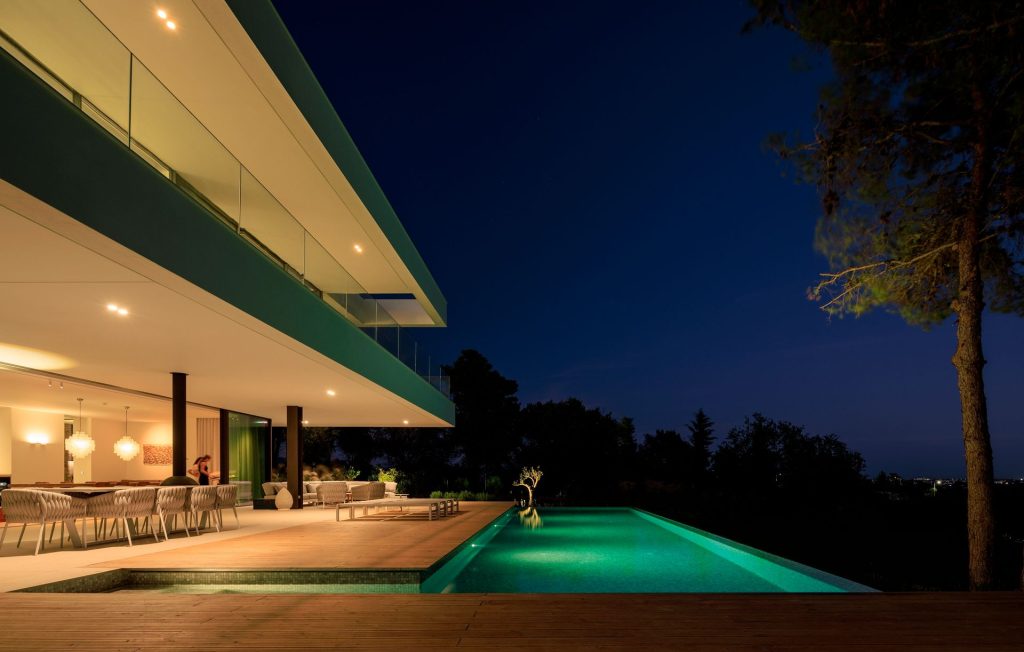Nestled amidst the breathtaking landscapes of the Algarve Coast, Mario Martins‘ architectural vision has come to life in Casa Morena. This two-story luxury villa seamlessly blends with the region’s natural beauty. The architect’s deep connection to the Algarve’s unique aesthetic is evident in every detail, from the minimalist design to the thoughtful integration of natural elements.
At the heart of Casa Morena lies a philosophy of “less is more,” where simplicity and elegance intertwine to create a sense of tranquility and connection to nature. Large, floor-to-ceiling windows, courtesy of the OTIIMA Plus System, flood the interior with natural light, blurring the boundaries between indoors and outdoors. The warm tones of the stonework and wood accents create a harmonious ambience that complements the surrounding landscape.

casa morena | mário martins atelier | © fernando guerra
The seamless transition between the living room area and the exterior area is a testament to Martin’s ability to harmonize architecture with nature. Sliding glass doors, opening onto a patio and transparent balcony, invite the outdoors in, creating a sense of expansiveness and connection to the surrounding garden space and swimming pool. As the OTIIMA Plus System windows slide effortlessly away, the living room transforms into an open-air extension, inviting the warm Mediterranean breeze and vibrant sunlight to permeate every corner.
Casa Morena exudes a sense of freedom, intimacy, and comfort, catering to those seeking a retreat where they can truly connect with their surroundings. Each room, from the master suite to the guest bedrooms, is infused with natural light and airiness, while the minimalist design ensures a serene and peaceful atmosphere.

casa morena | mário martins atelier | © fernando guerra
Perhaps his most famous principle, “Less is more,” summarizes Mies’ approach to design: stripping away the unnecessary to reveal the essential. His buildings are characterized by clean lines, open floor plans, and an absence of ornamentation. This philosophy encourages architects to prioritize spatial clarity and material integrity, resulting in modern and enduring structures.

© Tomeu Canyellas
1. Heydar Aliyev Center – Zaha Hadid
1. Heydar Aliyev Center – Zaha Hadid
Mario Martins’s architectural prowess is evident in every detail of Casa Morena. The villa’s structure, defined by clean lines and geometric shapes, complements the natural surroundings without overpowering them. Using raw materials, such as stone and wood, further reinforces the connection to the environment, creating a harmonious blend of man-made and natural elements.
The villa’s expansive garden, with its meandering pathways and lush greenery, serves as a verdant oasis, inviting residents to reconnect with the tranquility of nature. The sparkling swimming pool, nestled amidst the foliage, provides a refreshing respite from the warm Algarve sun, offering a tranquil space for relaxation and leisure.

casa morena | mário martins atelier | © fernando guerra
Casa Morena is a testament to the power and ability of minimalist design to integrate architecture with nature seamlessly. Through its harmonious blend of clean lines, natural materials, and expansive windows, Casa Morena offers a sanctuary of comfort, intimacy, and connection to the serene beauty of the Algarve Coast.
